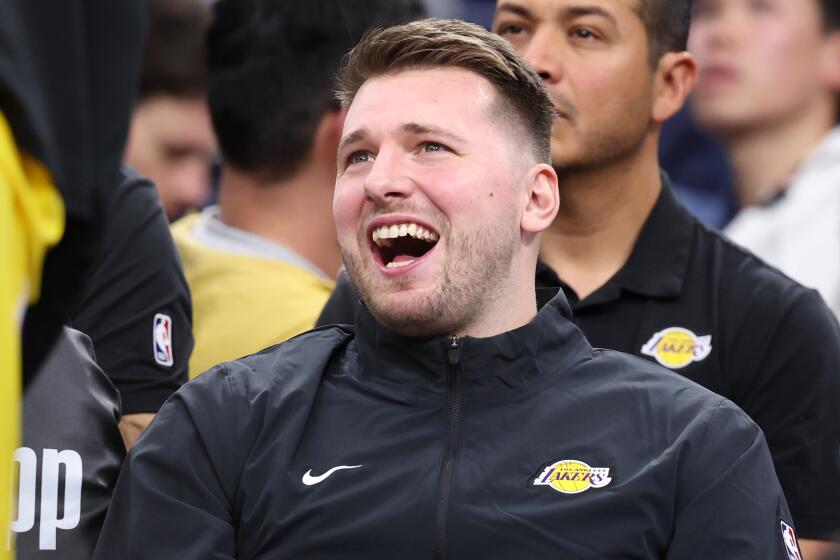Passing thoughts at L.A.’s first Death Cafe
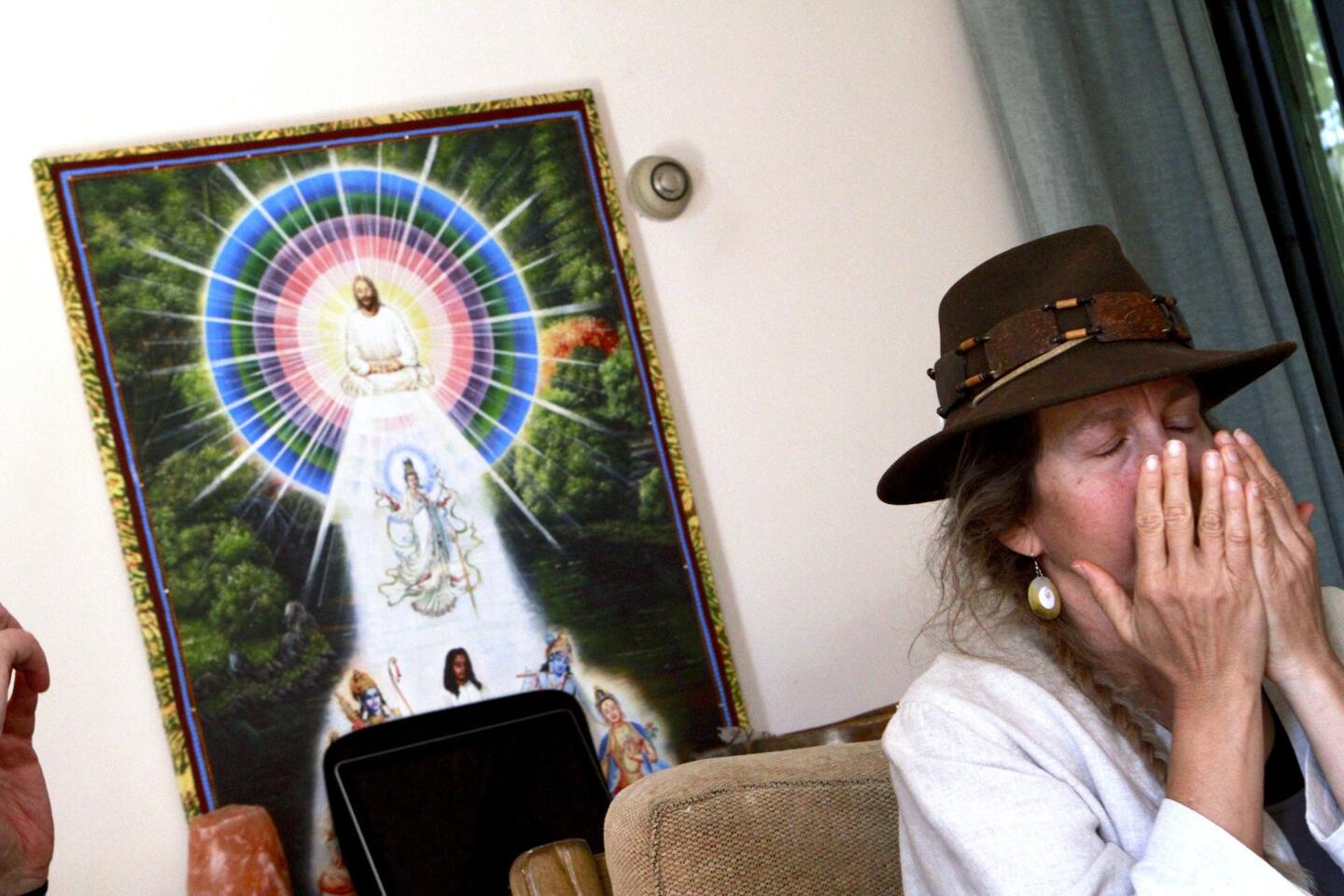
Antonia Young smells lavender oil that was passed around at the start of Los Angeles’ first Death Cafe, held in the Topanga Canyon home of Betsy Trapasso. Here people are encouraged to talk freely about death, a subject they usually avoid. It is not a therapy or grief session but a discussion. The movement started in England and has gone global. (Anne Cusack / Los Angeles Times)
Life’s end is a conversation-starter at Betsy Trapasso’s Topanga Canyon home, where there is no point of view beyond the broad notion that death deserves discourse.
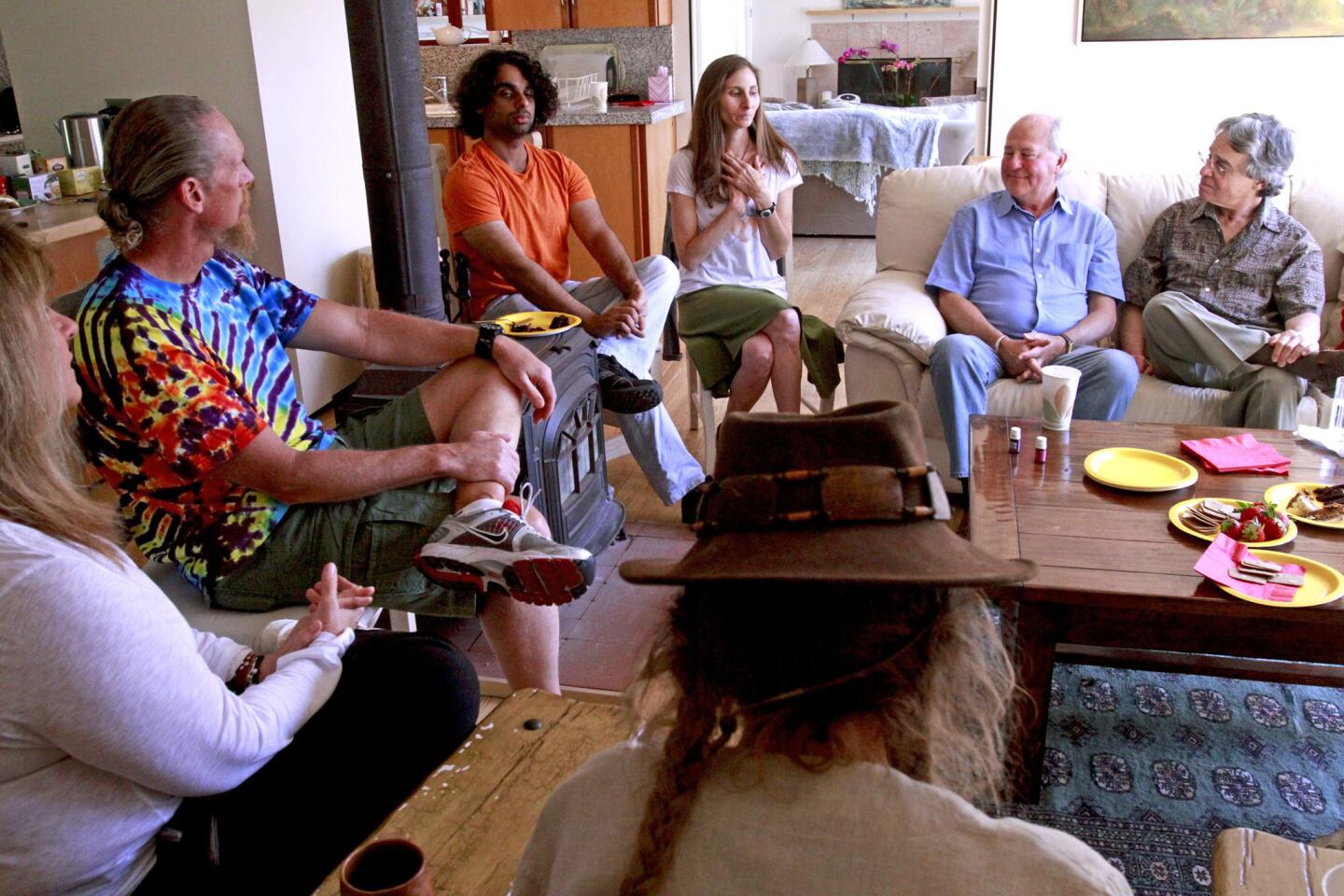
Betsy Trapasso, third from right, who describes herself as an end-of-life guide, leads a group seated in a circle at her her Topanga Canyon home. There’s no agenda. No profit motive. No point of view beyond broad notions: that death deserves discourse, and that facing it without angst can help people live their lives more fully. (Anne Cusack / Los Angeles Times)
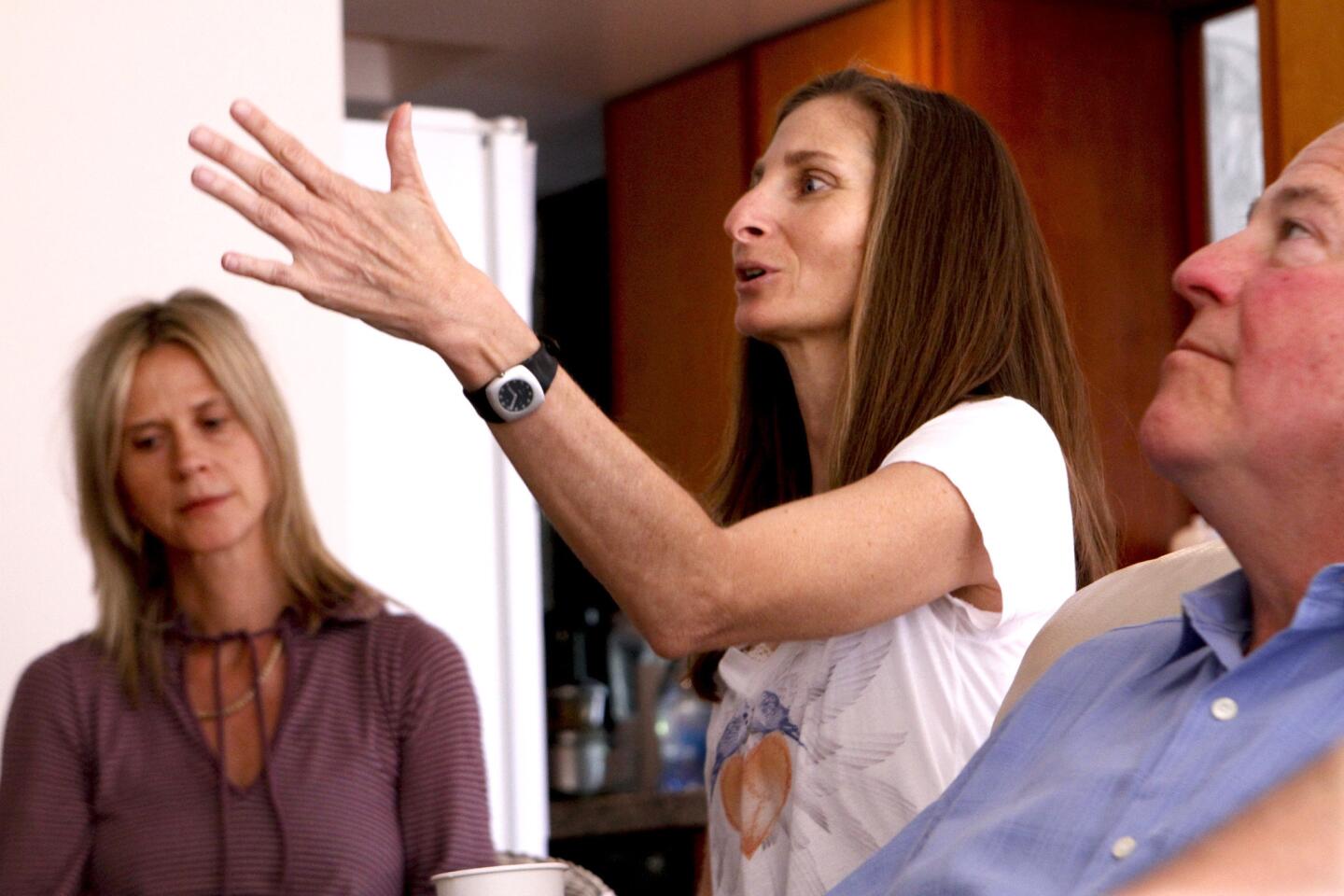
Trapasso talks about death as Julianne Reynolds, left, and Leszek Burzynski listen. “It’s not a support group. It’s not a grief group,” Trapasso says. “My whole thing is to get people talking about it so they’re not afraid when the time comes.” (Anne Cusack / Los Angeles Times)
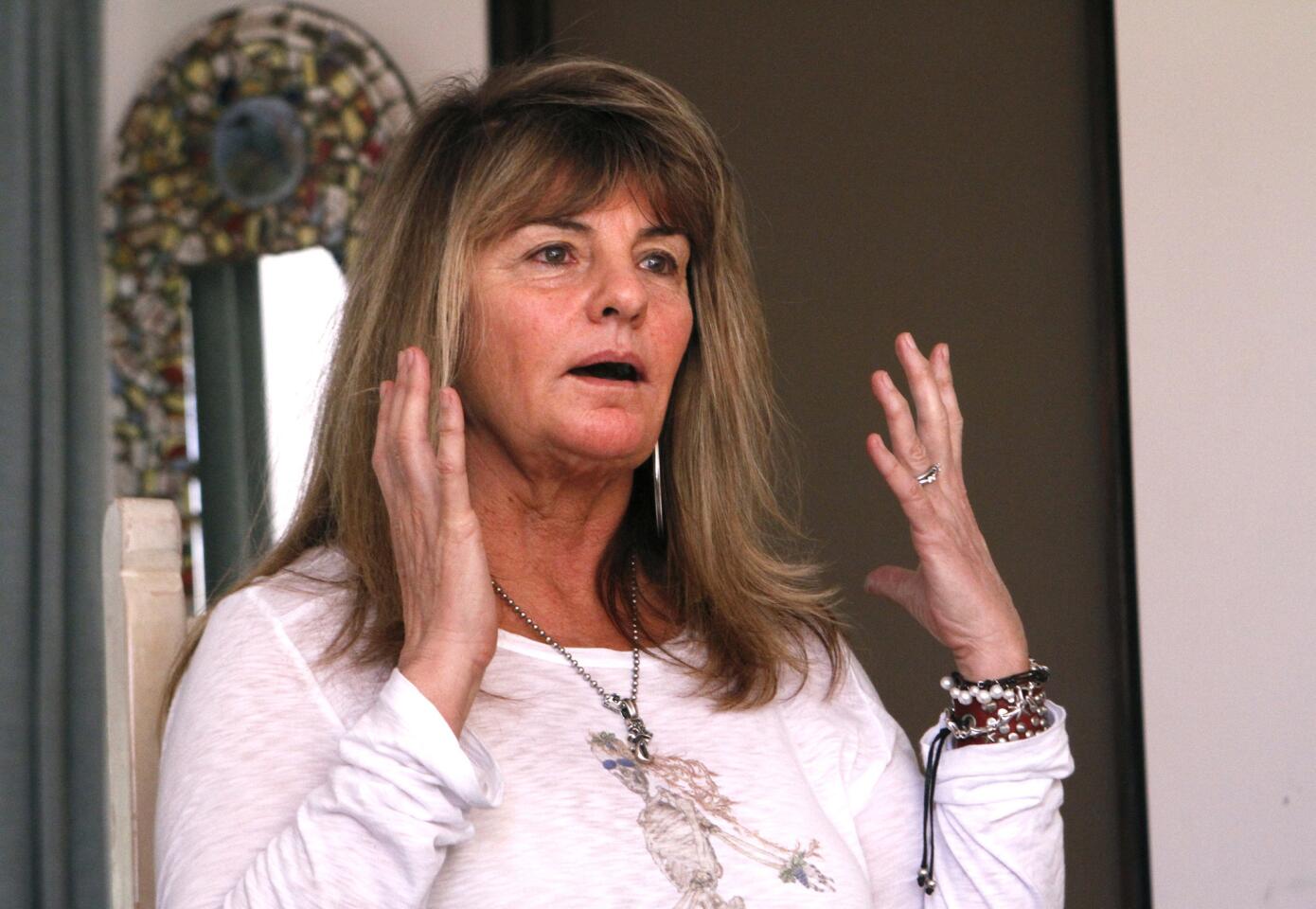
Dori Fisher, a graphic artist, says seeing her first body -- that of her grandmother -- terrified her. “I think that dying is as individual as living. And that’s what we don’t take into consideration,” she says. “Everybody should be able to die in the way that they want to, maybe as they lived.” (Anne Cusack / Los Angeles Times)
Advertisement
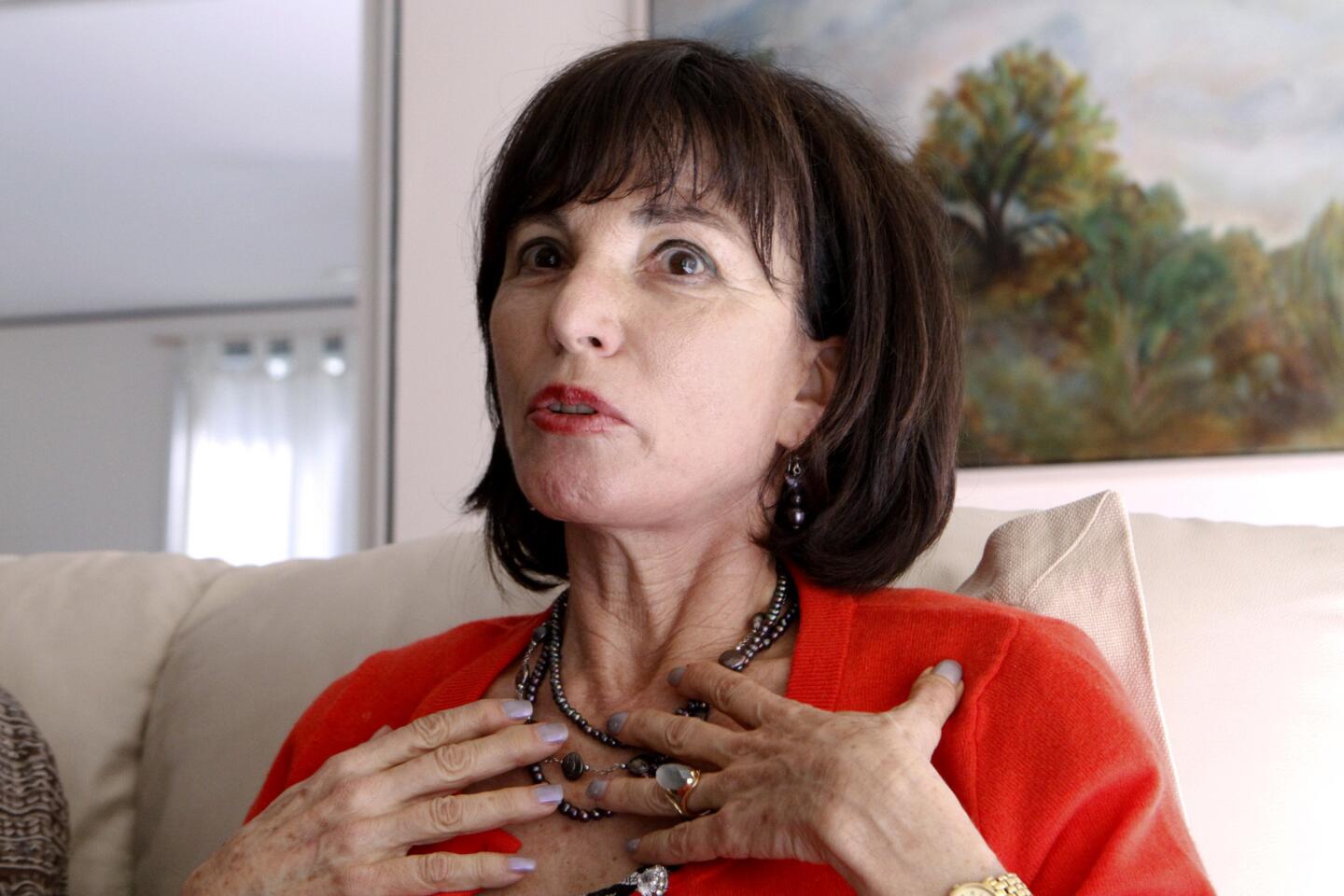
Jane Plotkin, Trapasso’s roommate, describes her mother’s “grueling, grueling” end, on a respirator. If one day she finds out she is dying, she says, she wants to choose when and “have some help to let go.” (Anne Cusack / Los Angeles Times)
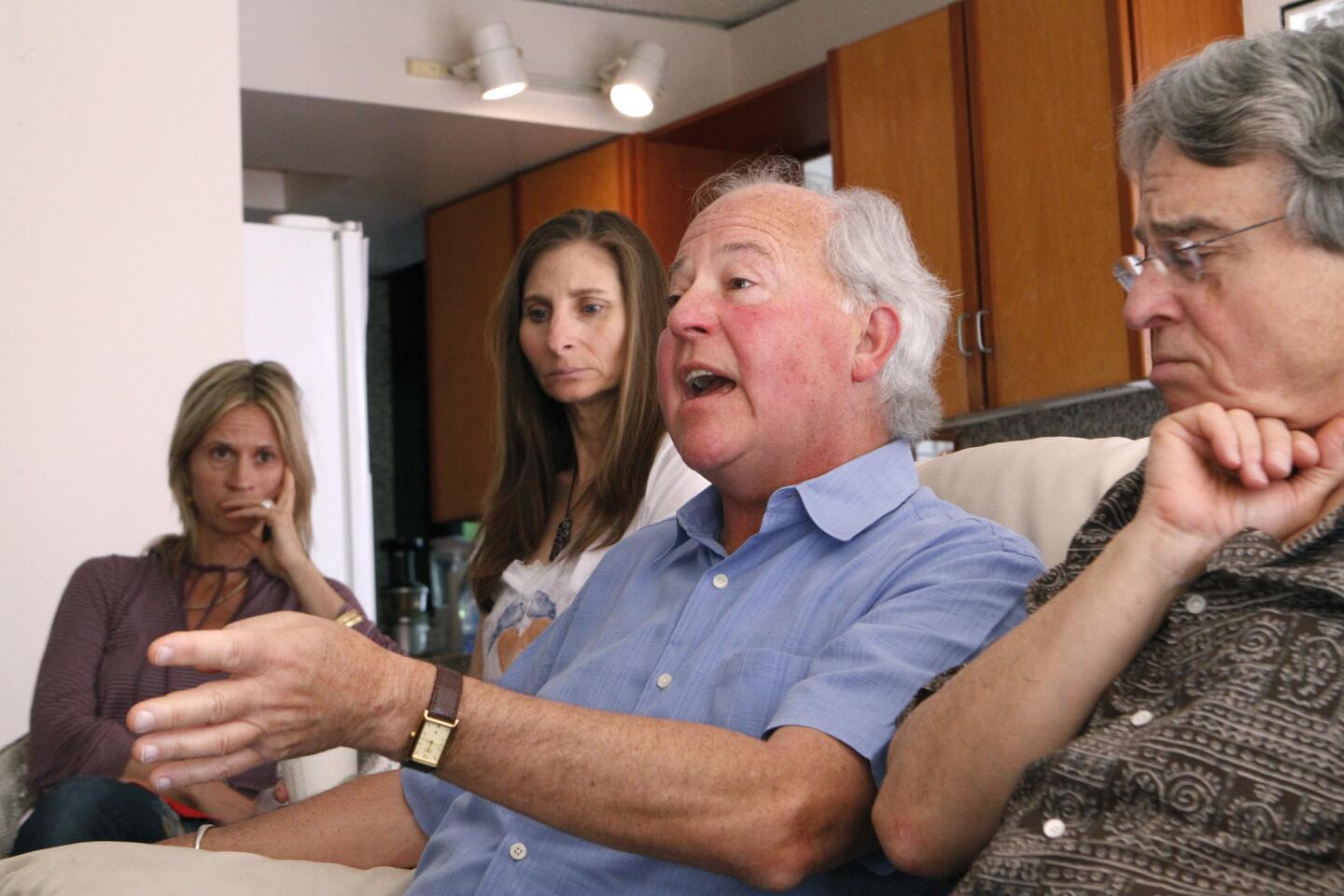
Leszek Burzynski, center, a British-born director, makes a point as Julianne Reynolds, left, Trapasso and Richard Riemer listen. “In a funny way, in our culture death is seen as a postscript, whereas in other cultures death is seen as a chapter in a continuation,” he says. (Anne Cusack / Los Angeles Times)


